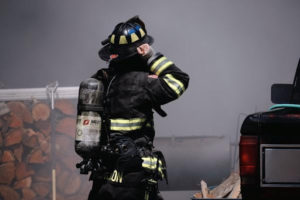First responders are often the first on the scene of an emergency; as such, they are expected to know CPR. However, according to a recent study, only about half of first responders feel confident in their ability to perform CPR. The study also found that first responders who had received CPR training in the last two years were more likely to feel confident in their ability to perform it. Keep reading to learn the basics of CPR and how to find CPR training.
What is cardiopulmonary resuscitation, and how do you find a CPR class?
CPR, or cardiopulmonary resuscitation, is a lifesaving technique used to revive someone who has stopped breathing or whose heart has stopped beating. The American Heart Association (AHA) recommends that everyone learn CPR, as it can be used in various emergency situations. There are many different ways to take a CPR class, including in-person classes and CPR classes online.
In-person CPR classes are typically offered by hospitals, fire departments, and community centers offer in-person CPR classes. These classes usually last several hours and teach participants how to perform CPR on adults, children, and infants. They also cover other lifesaving techniques, such as using an automated external defibrillator (AED) and choking relief. In addition to learning the basics of CPR, students in these classes often have the opportunity to practice their skills on mannequins or dummies.
Online CPR courses are another option for learning this lifesaving skill. These courses typically last between two and four hours and cover the same topics as in-person classes. However, online courses do not allow participants to practice their skills on actual people. Instead, they use videos or simulations to teach students how to perform CPR correctly and AED. Some online courses also offer certification upon completion.
What are the guidelines of CPR for a first responder?
The American Heart Association (AHA) has released a new guideline for CPR for first responders. The update includes a section on providing care to patients who have an out-of-hospital cardiac arrest (OHCA). The AHA says that the updated guideline will help improve the survival rates of OHCA patients.
One key change in the new guideline is the recommendation that responders provide chest compressions with minimal interruptions. In previous guidelines, responders were encouraged to take breaks between compressions. However, research has shown that taking breaks can reduce the effectiveness of CPR.
The new guideline recommends using an impedance threshold device (ITD) during resuscitation efforts. An ITD is a device that helps deliver compressions to the chest with greater force and fewer interruptions. It’s most effective when used in conjunction with manual chest compressions. They should also use a pulse oximeter to monitor the patient’s heart rate and oxygen levels. If the patient’s heart rate or oxygen level falls below a certain level, responders should provide rescue breaths until they return to normal levels.
What is the first step in CPR?
The first step in CPR for first responders is to determine if the person is unresponsive and not breathing. If the person is unresponsive and not breathing, check for a pulse by placing your fingers on the side of the person’s neck. If you do not feel a pulse, begin compressions. Push down on the center of the person’s chest at least 2 inches deep and 100 times per minute.
If you cannot find a pulse or the person begins to breathe again, stop chest compressions and give two rescue breaths. Tilt the head back slightly and lift the chin before giving mouth-to-mouth resuscitation. Pinch the nose shut and blow into the person’s mouth until you see their chest rise. Give one more breath after 30 seconds have passed since the last breath was given.
Why are compressions so important?

Chest compressions are a critical part of CPR. They keep the blood flowing to the brain and other vital organs. When performing chest compressions, you should push down the victim’s chest at least 2 inches (5 cm) and no more than 2.4 inches (6 cm). CPR can save someone’s life. It’s easy to learn and could make a difference in an emergency situation.

